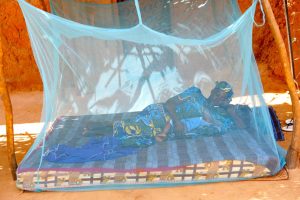Written by: Oladimeji Ayodeji Amos

Photo credit: https://www.countriestoday.com/
Introduction
Maternal mortality remains a major public health challenge, particularly in rural areas where access to healthcare services is limited. Every day, hundreds of women die from preventable pregnancy-related complications, and the majority of these deaths occur in low-resource settings. According to data from the World Health Organisation, maternal deaths happened approximately every two minutes, and in 2020, close to 800 women died from pregnancy- and childbirth-related causes that could have been avoided. Findings also indicated that Sub-Saharan Africa alone was responsible for almost 70% (202 000) of maternal deaths. In 2020, low- and lower-middle-income nations sadly accounted for about 95% of all maternal deaths, the majority of which might have been avoided.
Maternal mortality defined
The term “maternal mortality” describes fatalities brought on by pregnancy or delivery problems. Maternal mortality is the annual number of female deaths from any cause related to or aggravated by pregnancy or its management (excluding accidental or incidental causes) during pregnancy and childbirth or within 42 days of termination of pregnancy, irrespective of the duration and site of the pregnancy.
Contributory Factors
There are several factors that contribute to maternal mortality in rural communities, including poor access to healthcare services, lack of skilled birth attendants, and inadequate infrastructure. Many rural communities lack basic healthcare facilities, and women often have to travel long distances on bad roads to access maternal health services. This can lead to delays in receiving care, which can be fatal in emergencies.
Addressing the issues
To address maternal mortality in rural communities, there is a need for a multifaceted approach that addresses the root causes of the problem. This includes improving access to healthcare services, increasing the number of skilled birth attendants, and investing in infrastructure.
One way to improve access to healthcare services is through the establishment of mobile clinics that can bring healthcare services directly to rural communities. These clinics can provide prenatal care, delivery services, and postpartum care, as well as family planning services. Mobile clinics can also serve as a platform for health education, where women can learn about maternal and child health, nutrition, and hygiene.
Another critical intervention is the training of skilled birth attendants in rural communities. Skilled birth attendants are trained healthcare providers who can provide basic obstetric care, including monitoring labor, managing complications, and providing emergency obstetric care. The training of skilled birth attendants can help to reduce maternal deaths by ensuring that women have access to competent care during childbirth.
Lastly, there is a need for investments in infrastructure, such as roads, electricity, and water supply, to enable women to access healthcare services. Many rural communities lack these basic amenities, which can hinder access to healthcare services, especially during emergencies.
Conclusion
In conclusion, ending maternal deaths in rural communities is an urgent public health challenge that requires a comprehensive approach. This includes improving access to healthcare services, training of skilled birth attendants, and investing in infrastructure. By working together, we can ensure that every woman has access to quality maternal healthcare services, regardless of where she lives. The lives of women and newborns and most especially those in the rural communities can be saved by receiving care from qualified medical experts prior to, during, and after childbirth.
Thank you for your attention!!!
Sources:
UNICEF, (2023). Maternal mortality. Available on https://data.unicef.org/topic/maternal-health/maternal-mortality/
World Health Organization, (2023). Maternal mortality. Available on: https://www.who.int/news-room/fact-sheets/detail/maternal-mortality



